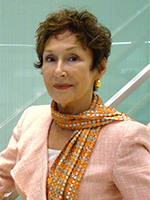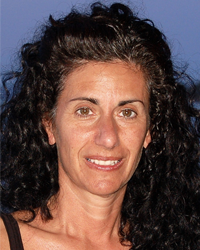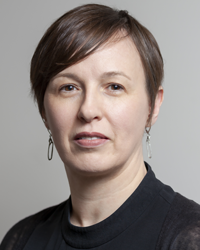Editor’s Note: The John A. Hartford Foundation is collaborating with ASA to advance equity in aging by supporting ASA RISE, a 20-week social justice and leadership program for rising leaders of color in aging, and via the development and dissemination of equity-related, partnership-based thought leadership through ASA’s Generations platform. This blog post from an ASA Rise Fellow is the ninth in that series.
“When I dare to be powerful, to use my strength in the service of my vision, then it becomes less and less important whether I am afraid.” —Audre Lorde
A theme I've noticed nowadays is that aging service providers are constantly saying, “In reality, we’re all one paycheck away from being homeless,” or some version of this statement. But what does that really look like?
At a young age, my mother was unable to work due to an injury. Consequently, affording rent became impossible for us, my four sisters and I, and when I was about 15 we fell into homeless. One thing that really stuck with me was—when you’re getting evicted, to have your stuff sit out on the curb, is a whole different feeling.
Everything seemed so surreal. The people who put our stuff on the curb had no regard for our personal items. They mixed the cat litter box with our clothes. They had so little respect for our things and treated us with so little dignity.
For me, that’s when it became real. I was actually homeless. Before that, we had been staying in hotels or couch surfing with friends or family.
'The people who put our stuff on the curb had no regard for our personal items.'
After that, I learned to become more vocal in asking for help from my school social worker for things like food, clothes and help with being able to afford and attend prom. I also went to live nearby with my aunt for a year, so I would have a stable residence until I graduated from high school. I really wanted, and needed, a “normal” teenage high school experience.
These early experiences of navigating the system, at such a young age, and getting into the helping field of social work has shaped my ability to better serve and advocate for others, particularly older adults.
I have lived the experiences that many low-income older adults face. Coming from a background of being low-income and homeless, I can attest to the feeling of precarity, fear of the unknown, the constant state of worrying about the possibility of losing everything of value to me and wondering where my next meal would come from and where I’d lay my head that night.
Transforming Lived Experience Into Social Work Practice
Having been both a recipient and a provider of social services, I would like to share some ways providers and individuals who come from a varied socioeconomic statuses can provide quality services to low-income older adults. While this is not a fix-all guide to address service needs for older adults, the following suggestions may be helpful to use when advocating, assisting and creating policies and programs.
- Check biases, assumptions and privileges at the door—Implement cultural humility in your practice. Never assume you know what is best for the older adult or population with whom you are working. Although you are the professional in the helping relationship, they are the experts in their lives. Beware of power imbalances. Cultivate a non-paternalistic partnership. Help low-income older adults make use of the power they already have. Work with and not for clients.
- Have empathy, not sympathy—Empathy is the ability to put yourself in someone else’s shoes and feel what the person is experiencing from their perspective, to be present in the moment with them. Empathy fuels connections and is nonjudgmental. Sympathy is an understanding of one's feelings from your own perspective. Dr. Brené Brown makes a succinct comparison of empathy vs. sympathy, reminding us that we can only create genuine empathic connections if we are brave enough to get in touch with our own fragilities.
- Trust has to be earned, not given—Often, as providers, we get so wrapped up in the day-to-day tasks of the job that we end up not spending enough time with clients. Where there is no trust, there’s no equity. The more we get to know the clients we serve, the better we are able to design, develop and tailor services to meet their unique needs and desires, whether it is by volunteering our time to deliver meals, spending time at congregate-meal sites or becoming a friendly visitor to older adults.
- Combat economic insecurity—Socioeconomic status is a key factor in determining the quality of life of older adults. More than 15 million people ages 65 and older are economically insecure, with incomes below 200% of the Federal Poverty Level. Declines in health and the death of a spouse are common factors among older adults that can affect financial standing. For people on a fixed income, the rising cost of living and inflation can make it difficult to meet basic needs. The Gerontology Institute at the University of Massachusetts Boston developed the Elder Index, which can be a powerful tool for aging service providers, as it clarifies how far money really goes in different locations. The National Council on Aging offers a guide with suggestions for how caseworkers and advocates can use the tool to communicate older adults’ needs and apply them directly in their daily work.
- Looking through an intersectional lens—Aging should be examined through an intersectional lens. It is important to be aware of ageist attitudes and stereotypes. As a resource, Reframing Aging is a social-change project that seeks to dismantle the negative social impressions of aging, while improving the understanding of what older adults can contribute to society.
We are all human. We need to move toward an ethic of care and compassion that is human-centered. As writer and activist Audre Lorde reminds us, “We must recognize and nurture the creative parts of each other without always understanding what will be created.”
Zaire Sims is a fellow of the American Society on Aging RISE Program and service coordinator at Meals on Wheels of Southwest Ohio & Northern Kentucky.









